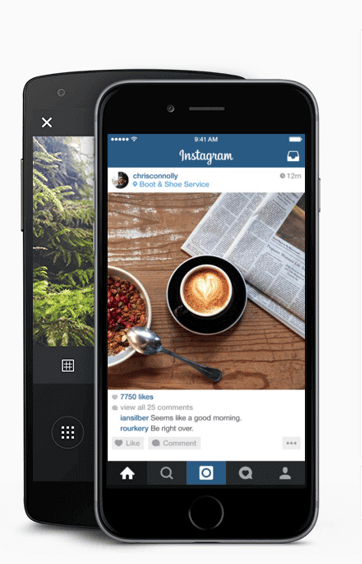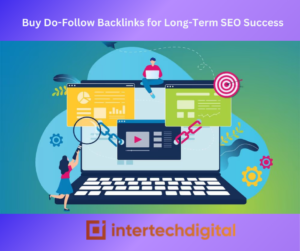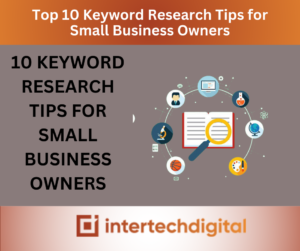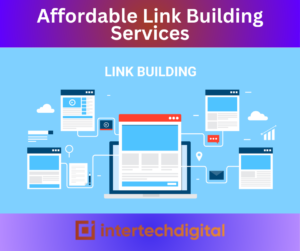Boost your Instagram ad budget
Spending more money on Instagram marketing campaigns can be a good idea if you want to receive better results. Increasing your budget, often known as vertical scaling, will help you reach more of your target audience more quickly. To scale Instagram advertisements vertically, follow these best practices.

Ad Spend Should Be Scaled Strategically
When you start to get good results, you could be tempted to increase the budget to double or triple it in order to capitalize on the ad set’s success. Although you can increase your budget over time, it’s usually advisable to avoid making significant adjustments all at once.
Keep in mind that the Instagram advertising algorithm has a huge influence on how well each ad set performs. After all, Instagram optimizes ad distribution for your audience based on the budget you choose. Making significant modifications can throw the optimization off, putting performance at risk.
Wait till your ad set has completed the learning process before scaling. Then, once it’s optimized, gradually increase your budget. Increasing your budget by 25% every few days or once a week, for example, is an excellent place to start. Click the pencil icon in the Budget column of your Facebook Ads Manager report to edit the budget.
As you make adjustments to your campaign, keep a careful eye on it. You want to maintain the campaign running normally as much as possible to prevent forcing it back into the learning phase, which might happen if you scale too quickly or make too many changes.
Use Budget Optimization for Campaigns
If you’ve already found a high-performing Facebook ad set to focus on, raising the budget for that ad set can help you scale vertically. But what if you have a few ad sets running and aren’t sure where to focus your efforts?
Campaign Budget Optimization is a superior option in this scenario. When you enable Campaign Budget Optimization, Instagram optimizes your campaign’s spending across the board. With more possibilities to optimize, the algorithm can avoid wasting money on ineffective ads and put your money where it counts the most. Essentially, this capability allows you to automatically scale vertically.
Before or after publication, you can enable Campaign Budget Optimization at the campaign level. Changing this parameter while the campaign is underway, however, would most certainly restart the learning period for all ad sets. If this is the case, it’s critical to keep a careful eye on them for any significant changes in performance.
Increase the Number of People who See Your Instagram Ads
Do you want to get more bang for your buck with your current Facebook ad budget rather than spending more? Vertical scaling isn’t your sole choice. You can scale horizontally instead of increasing the budget for a campaign if you don’t want to increase the budget. By boosting your audience, you can receive better outcomes.
Create New Ad Sets
Always develop new ad sets rather than altering current ones when you want to reach additional people or explore how new audiences react to your Instagram campaign. By selecting an existing ad set in Ads Manager and clicking the Duplicate option, you can effortlessly copy over all of its settings. Select the number of new ad sets to produce and integrate them into the original campaign.
You can also start from scratch and create a new ad set. Select the campaign you wish to change in Ads Manager. To create a new ad set, go to the ad set level and click the green Create button.
Increase the Size of Your Audience
Perhaps your current ad set makes use of a custom audience based on your client database. Perhaps you’re targeting a particular audience based on their interests. You can increase your targeting in either case by adding new audience segments.
Identify interests or demographics that align with your target audience to create new segments. Untapped interests might be found in your buyer persona.
Go to your Facebook Business Suite Audience Insights if you need more inspiration. Add the demographics and interests that define your target audience to the Potential Audience column.
Then scroll down to the bottom of the page to view the most popular pages among your target demographic.
Consider these pages to be interests from which you might create new audience segments. You can add them to your potential audience and save it to Ads Manager by clicking the Create Audience button. After that, you can include it in your new ad package.
You may end up with a bunch of overlapping audiences as you develop new segments to test. On the one hand, some overlap is unavoidable, especially if you’re trying to reach a specific demographic. Too much overlap between audiences in competing ad sets, on the other hand, might cause performance to suffer.
The Facebook Audience Overlap tool can be used to check for overlap. Go to the Audiences tab in Ads Manager. Select the audiences you’d want to compare and click the three dots to compare them. After then, go to Show Audience Overlap and look at the proportion.
Even if there is a lot of overlap between two audiences—as in the example below—you can still target them in different, competing ad packages. When setting up targeting settings, just be sure to leave out the overlapping audience.
Make Audiences That Look Like You
Creating new audiences manually is a good approach if you have some amazing ideas for new customer groups to attempt. But what if you want to increase the reach of your campaign by reaching out to more people who are similar to your current customers?
Instead of or in addition to developing fresh saved audiences, create lookalike audiences. Go to the new ad set you just added to your campaign to generate a new lookalike audience. Then carefully select your data source.
Use a source audience that is already very engaged with your brand for the best outcomes. For example, you could design a lookalike that resembles customers who have visited your website or put things to their shopping basket in your eCommerce store.
Use value-based data sources to create high-value lookalikes if you have them. For example, you can generate a lookalike audience based on buy events using a product catalog or your Facebook pixel.
Build lookalike audiences based on lower-funnel data sources if you don’t collect value-based events. People that have interacted with your ads or messaged your Instagram account, for example, could be your source audience.
Once you’ve decided on a source, you can make up to six lookalike audiences from it. Set a 1 percent size for the first lookalike audience you construct from a data source, which contains people who are the most similar to the original. You can utilize the same source to make increasingly massive and less-similar lookalikes as you scale up.
Keep in mind that Instagram now serves advertisements to people who aren’t in your lookalike demographic if they’re likely to perform better, which might help you grow even further. You may add demographic and interest-based targeting on your lookalike audience at the ad set level if you want greater control over who sees your ads.

A/B tests should be conducted
Do you want to try out a few different audiences before settling on the best one to scale? Without having to manually track results, you may run A/B testing to determine the best-performing audiences. Click the A/B Test button in Ads Manager and select the ad sets you wish to compare. Choose a statistic to track, such as cost per click (CPC), cost per purchase, or any other typical events you’ve set up.
After that, publish the test and keep an eye on the outcomes in Experiments. Ads Manager will choose a winner for you, assisting you in determining the optimal audience for your campaign and budget. The results can also be used to inform future horizontal scaling initiatives.
Use a Variety of Instagram Ad Placements
What if you’ve already established a strong target audience and don’t want to enlarge it? Your audience may become ad fatigued after a while, or your costs may begin to rise. You can scale horizontally by adding more Instagram placements, which is a good thing.
When you initially start advertising on Instagram, you might just focus on the news feed and the Explore button. However, by incorporating newer placements such as Reels and Stories, you may be able to reach a larger fraction of your target audience while also reducing ad delivery and cost.
Duplicate the ad set and navigate down to placements to change where your ad shows. Examine all of Instagram’s features, such as Feed, Explore, Stories, and Reels.
Customize your ad for each location at the ad level. Focus on refining image ratios and utilizing existing capabilities rather than making big modifications to the text or creative. Reels, for example, can include text overlays, and Stories can have interactive features like polls.
Keep an eye on the placement breakdown while you run the ad. Keep an eye on which spots are most effective for your audience and consider turning off any that aren’t producing results. The results can be used to inform future scaling initiatives.

Iterate On The Most Effective Instagram Ads
You can still scale horizontally using your top advertising if you’ve already used all of your available spots. When you employ the many optimization options in Ads Manager, however, it’s crucial to keep in mind that choosing the perfect ad can become much more difficult. To boost the performance of your ads, you might be tempted to use features like Dynamic Creative or Optimize Text Per Person.
However, because Ads Manager combines data, you won’t always be able to identify which creative components or text field placements fared best. If you’re thinking about horizontally scaling a campaign, use static creative pieces rather than dynamic or optimized ones.
Identify Your Most Effective Ads
You need to know which ads produce the best results before you can grow them. After all, you want to expand your best-performing advertisements, not your average-performing ads. Go to your Advertising Manager report and select an ad set to locate your best ads. Then sort the ads by CPC (cost per click).
Begin with the most effective ad. Duplicate it in the same ad set, then iterate on the ad wording, call to action (CTA), or creative using one of the choices below. Change one thing at a time to keep track of what’s working and what isn’t.
Make a New Call To Action
Changing the CTA that appears on your ad is the simplest modification to make. Choose another CTA from the Call to Action drop-down menu that works with your offer. For example, instead of “Subscribe,” try “Sign Up” or “Order Now” instead of “Shop Now.”

Change The Ad Copy
Another possibility is to tweak the ad copy slightly. Maintain the general message while making modest changes. You might, for example, shift the in-text CTA to the beginning of the copy rather than the conclusion, or change the benefits.
Make Use of a Fresh Idea
Small alterations to the creative can also be made, but big changes should be avoided. You might, for example, use a text overlay to repeat the ad copy or crop the image differently.
3 Ways to Cut Down on Instagram Ad Fatigue
Keep in mind that the longer your campaigns run, the more likely they are to generate ad fatigue. Keep a tight eye on your numbers and check for any variations in performance, especially if they start to become a trend. If you see that your prices are rising, your results are declining, or your impressions are falling, you may need to take additional actions to scale more successfully.
Lower the Frequency
If you start to receive unfavorable feedback on your ads, it’s possible that your audience is seeing them too often. You can specify a lower frequency cap at the ad set level if you’re utilizing the Reach objective to ensure your audience doesn’t see your ads as often. To discover the ideal mix for your audience, experiment with different frequencies.
Make use of the terms “reach” and “frequency.”
Alternatively, instead of a typical auction campaign, develop a reach and frequency campaign. This buying type can be selected at the campaign level, and the frequency can be specified at the ad set level. Reach and frequency campaigns are set to deliver up to two times every seven days by default. Instead, you can choose a frequency that you know works well for your company.
Keep in mind that reach and frequency campaigns have fewer options than auction campaigns. It’s better to avoid using published reach and frequency campaigns for testing because you can’t change audience targeting or placements.



